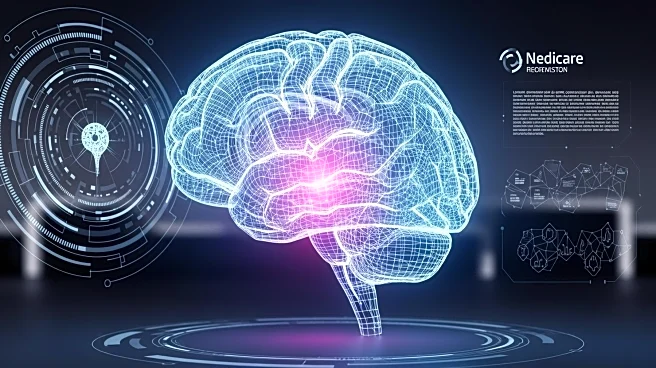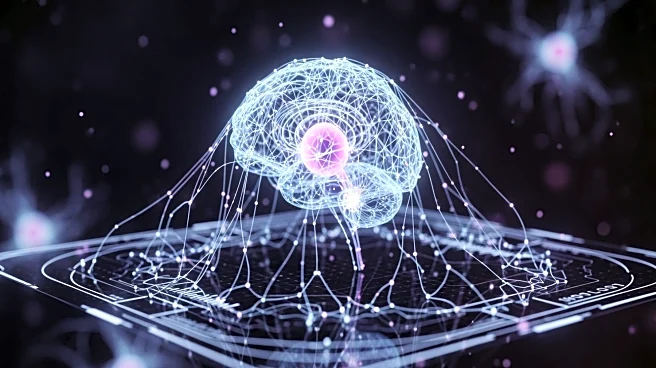What's Happening?
Researchers from the Child Mind Institute have discovered that the severity of autism symptoms, rather than diagnostic classification, is linked to specific patterns of brain connectivity and gene expression
in children diagnosed with autism spectrum disorder (ASD) or attention-deficit/hyperactivity disorder (ADHD). The study, led by Dr. Adriana Di Martino, utilized resting-state functional MRI to examine brain connectivity in 166 verbal children aged 6-12 diagnosed with autism or ADHD. Findings revealed increased connectivity between nodes of the frontoparietal and default-mode networks, which are crucial for social cognition and executive functions, in children with more severe autism symptoms. This connectivity pattern was consistent across all children, regardless of their diagnostic classification, and overlapped with gene expression maps related to neural development.
Why It's Important?
The study's findings have significant implications for understanding the biological basis of neurodevelopmental disorders like autism and ADHD. By focusing on shared brain-gene expression patterns linked to autism symptoms, researchers can better define the roots of neurodevelopmental co-occurrences. This approach supports a shift towards dimensional, transdiagnostic, and data-driven models of mental health, which may lead to more precise recognition and treatment approaches tailored to individual neural profiles. The research also highlights the potential for developing biomarkers associated with these conditions, which could improve diagnostic and therapeutic strategies.
What's Next?
The study suggests that future research should focus on specific symptom dimensions and their biological correlates to enhance recognition and treatment approaches. The Child Mind Institute's Healthy Brain Network initiative, which provides no-cost diagnostic assessments and neuroimaging data, may play a crucial role in advancing this research. Additionally, the findings could influence clinical practice by promoting a more nuanced understanding of neurodevelopmental conditions, potentially leading to more personalized treatment strategies.
Beyond the Headlines
The research underscores the importance of considering both dimensional and categorical models of neurodevelopmental conditions. By identifying shared genetic mechanisms between autism and ADHD, the study contributes to a growing movement in psychiatry towards more comprehensive and integrative approaches to mental health. This could lead to long-term shifts in how these conditions are diagnosed and treated, ultimately improving outcomes for affected individuals.











